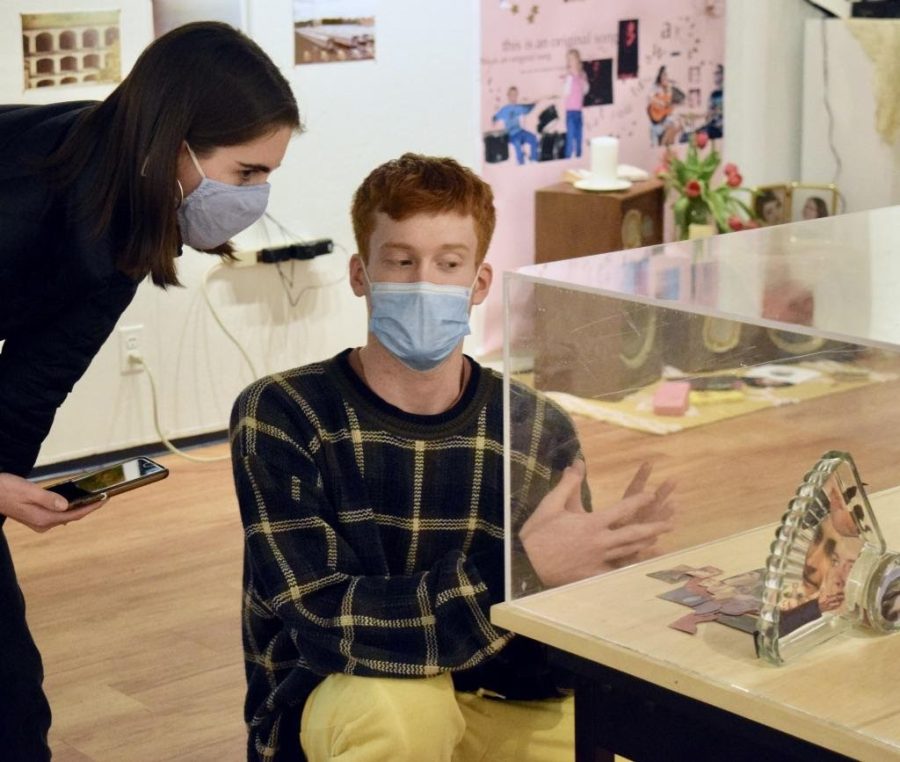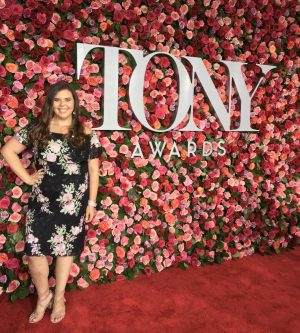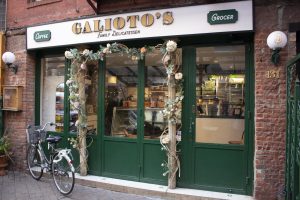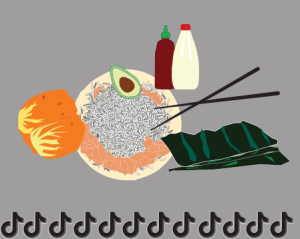‘Artist Conversations’ Unites Art History and Visual Arts Students
Community and Memory in ‘Slogan 13: Be Grateful to Everyone’
COURTESY OF GILLIAN KWOK
Sloane Cameron and Spencer Everett, both FCLC ’22, examine artwork in the Lipani Gallery at FCLC for the senior showcase.
January 23, 2022
“Artist Conversations” is an ongoing collaborative project that came to fruition at Fordham during the fall 2019 semester. The project provides art history students with the opportunity to interview visual arts students about their senior seminar thesis works.
Students held one-on-one conversations, creating spaces for the artists to describe their practice, process and inspiration. Each art history student produced a review following the interview that highlighted the senior seminar project, shedding light on the artists and their work. These reviews are published on Art Ramblings, alongside the visual arts senior seminar group exhibition held at the end of the fall semester.
“Artist Conversations” aims to facilitate and encourage students across disciplines to engage with each other, exploring questions of art production and criticism and celebrating the vibrant, distinctive, creative voices in our community.
“Slogan 13: Be Grateful to Everyone,” the title of Fordham’s visual arts senior seminar exhibition this year, aptly ties in with the themes of memory and community that the artists focus on.
The “Highlights from Senior Seminar” exhibition is now up in the Lipani Gallery at Lincoln Center and will be on view through January. The “Artist Conversations” reviews are available through the art history department’s blog, Art Ramblings. The following is a review of the group exhibition written for the project.
Review of “Artist Conversations”
“Slogan 13: Be Grateful to Everyone,” the title of Fordham’s visual arts senior seminar exhibition this year, aptly ties in with the themes of memory and community that the artists focus on.
The artists highlight the contents of their own memories and the very nature of memory, addressing personal histories in the contexts of comfort, despair and family — including chosen families.

Caitlin Bury and Mateo Solis Prada, Fordham College at Lincoln Center (FCLC) ’22, aim to preserve memories from their family histories. Bury’s large collage involves music and, according to her, the stories her family doesn’t tell. On a large, pink vertical background, she combines text, images and an interactive sound element, which allow visitors to experience years of her family history in a condensed, comforting multisensory environment. Bury addresses her personal connections to her family history, exploring links between music, femininity, family relationships and identity.
Similarly, Prada deals with memory and the comfort that arises from recognizing one’s own part in a vibrant community. His interactive sculpture features ceramic food made with craft materials such as sequins, googly eyes, beads and pipe cleaners. This installation is part of a larger project in which he explores his family history through family recipes.
Prada wrote letters recommending certain recipes to people close to him, invited them to a meal in which he made the dishes in the recipes, and recorded the group’s conversation over the meal. In order to recreate this experience, he placed his sculpted food on a table with chairs and headphones that observers can wear to listen to these conversations while sitting at the table. In this work, Prada allows observers to share the familial, community environment that can be created by food.
Lenah Barge, FCLC ’22, also utilizes documents from her family history in her work. Black-and-white photographs of family members form the core of her graphic posters, reminiscent of those used in protests. Barge’s many posters fill the viewer’s field of vision, each one emblazoned with the words “More Than a Monolith.” These black-and-white photos are framed with flowers and eye-catching reds and blues. Using intimate, engaging images of the artist’s family, these posters demonstrate that monolithic stereotypes are unproductive, harmful ideas that ignore the multifaceted communities and individualities of people of color.
Sarah Hujber and Lara Foley, both FCLC ’22, each focus on their own personal memories, approaching them from a quiet, meditative perspective. Hujber’s photographs depict abandoned buildings she encountered while on a road trip. In these images, she focuses on intriguing interplays between light and perspective, making mundane scenes look alien in their intense emptiness. While memorializing an experience in her own life, Hujber also captures the strange feeling of solemnity that one can only experience by witnessing buildings that humans once inhabited and no longer do.
Foley’s small watercolor paintings are based on photographs she has taken over the years, each focusing on a single everyday object or detail and arranged on a large sheet of white paper. She deals with the very nature of memory, as each one of these small images acts as a reminder of a certain event or place and may represent a different memory for each person who sees it.

Nicole Perkins, FCLC ’22, similarly focuses on memory, drawing from her own environment and those of the people close to her. She states that her photographs are meant to be peaceful and a respite from a chaotic year, and peace is exactly what she communicates in these images. They often depict her friends in familiar spaces such as beds and cars. Perkins uses dramatic lighting and color to give her photographs a dreamlike atmosphere, evoking nostalgia, intimacy, comfort and leisure.
Addressing the emotional duress many of us have experienced during the pandemic, the portraits made by Kaila Cordova, FCLC ’22, express the thoughts and feelings of their anonymous subjects using personal, private methods. Her colorful paintings feature flowers alongside the subjects’ faces, each one depicting a unique interaction between its subject and the flowers surrounding them. Cordova uses the meanings coded by different types of aesthetically pleasing, often comforting flowers to communicate information about her subjects’ internal lives. Here, Cordova respectfully depicts individual difficulty while also suggesting the potential for healing.
These works are interspersed with each other throughout the gallery, lending the exhibition a feeling of community and collaboration, which is consistent with this group of artists’ creative process.
Some include images of their peers in their work, and many have mentioned a sense of working as part of a supportive community. Communities can help us deal with the difficult times that we are currently facing, and that is evident in “Slogan 13: Be Grateful to Everyone.” In their emotionally potent work, senior seminar students emphasize the importance of both individual and collective memory, depicting remembering as a path to healing.













